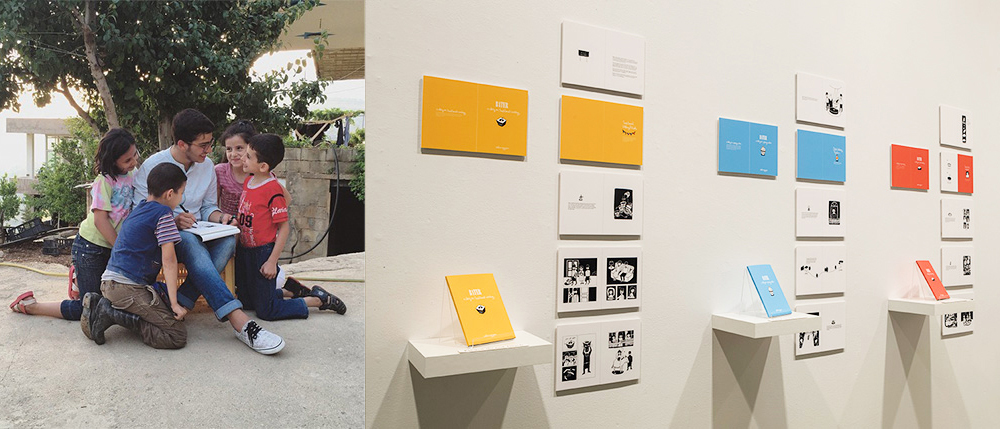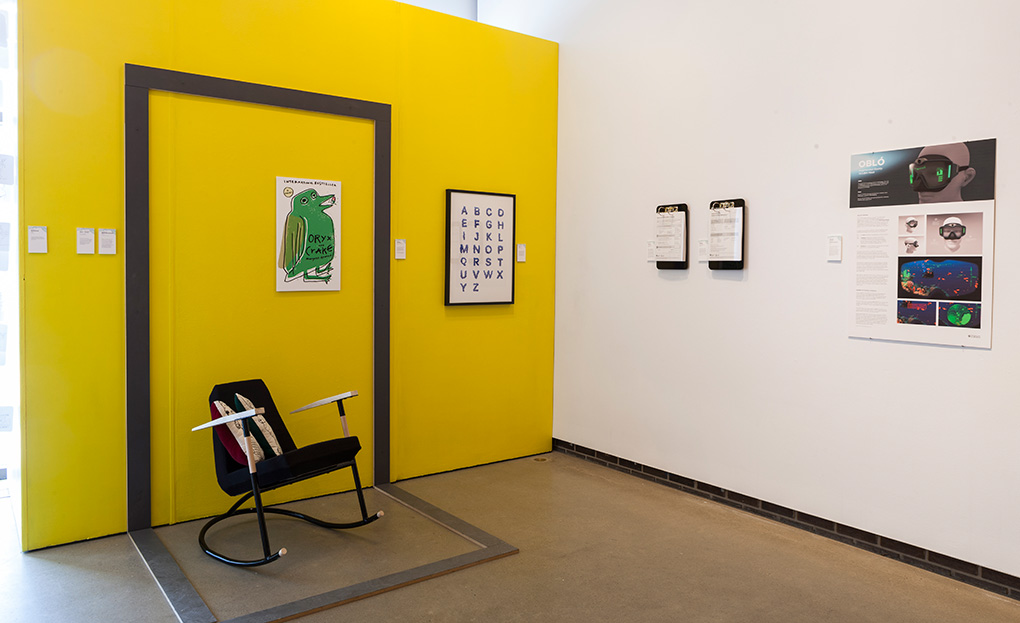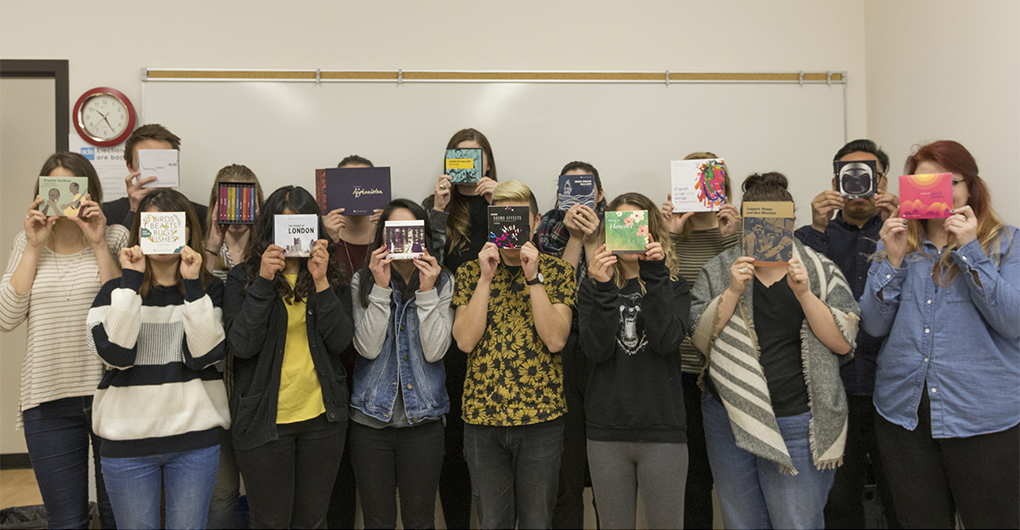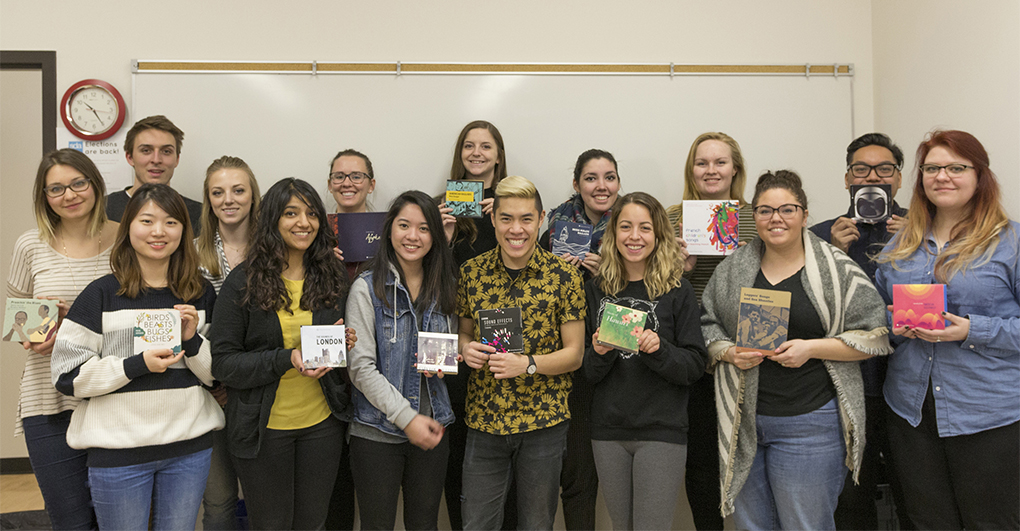Visual Communication Design
Good design makes the world a better place
Society's needs inspire designers to innovate. Designers analyze society's needs and create solutions that shape how our world looks and functions. Our Visual Communication Design (VCD) program prepares you to create communications that inform, entertain, educate and generally improve people's health and well-being.
In our four-year Bachelor of Design (BDes) program, you'll learn to create and use words, symbols and images—in strategic and sophisticated ways—to communicate ideas and information in products as diverse as electronic and printed magazines and books, branding/visual identity packages, signage, apps, websites, maps and museum displays.
The imagination and creativity of designers touches almost every object in our lives—from the poster in the street to the software on our phones.
Visual Communication Designers create concepts and translate them in to visual form-by hand and then through computer software—to communicate and create products that engage, inform, educate, entertain and inspire people. They create layouts or electronic displays and coordinate production and implementation of their designs.
Your Studies
Your education will include studies in:
- Visual Communication Design
- Typography
- Photography
- Layout
- Illustration
- Information Design
- Interactive Media
- Book Arts
- Web Design
- App Design
- Research and Theory
- Contemporary Design Issues
- Design Management
- Design Practicum (practical work experience)
Careers
A wide range of careers are available to you, such as:
- Design Studio
- Advertising Agency
- Architectural Office
- Magazine or Book Publisher
- App Designer / Developer
- Game Designer / Developer
- Government Media or Communications Office
- University Media or Communications Office
- Large Commercial Company
- Cultural Sector-Art Gallery, Museum, Theatre, etc.
- Film/TV/Video Production Company
Undergraduate Studies
Our design route system is unique in Canada
You can focus your program, according to your specific areas of interest, by choosing one of our Bachelor of Design Routes: Business and Marketing, Social Sciences, Engineering, Computing Sciences, Printmaking or the General Route. This route system gives you the opportunity to gain specific critical skills and knowledge that meet particular demands of the current economy.
Your first year courses, common to all students in the BDes Program, will introduce you to the fundamental concepts of visual art and design practice and history. In studio courses you'll develop skills in drawing, the use of colour and two and three-dimensional studies. Courses in the History of Art, Design and Visual Culture show and analyze specific works of art and design in relation to their historical and social contexts. After completing your first year, you may choose to focus your studies in Visual Communication Design or Industrial Design, or you can continue to take courses in both disciplines. During the senior years of your program, you will have opportunity to work on projects with clients and undertake a practicum (internship) and gain design experience in a real world setting.
Your design studies will teach you technical skills, how to think critically and how to visualize your ideas and bring them to life. Our program is guaranteed to stimulate your intellectual and creative growth. You'll develop advanced thought processes and conceptual skills and you'll discover the relationship between design and the ethical responsibilities associated with being a design professional.
Our class sizes allow instructors to get to know their students-their abilities and strengths-and to give them a substantial amount of individualized attention. Students also get to know each other well and build long-term relationships and friendships that sometimes translate in to business partnerships and professional relationships later on.
Throughout your BDes degree, you will have opportunities to engage in projects with members of local communities, organizations and businesses. You also have opportunities to participate in design studies trips, international exchanges and study abroad.
Graduate Studies
Our MDes degree program provides advanced studies in Visual Communication Design (and Industrial Design) in the division of Design Studies. Our approach is interdisciplinary and our purpose is to equip graduates working methods that prepare them to face new problems in effective, meaningful and appropriate ways. Facilities and equipment in Visual Communication Design and Industrial Design include current technologies and large studio spaces and offices. Graduate students benefit from high contact and supervision time with a variety of academics in the Department.
During your first year of study, you will work under the guidance of several Design Studies Professors on a number of projects. Upon completion of your first year course work, you'll begin your thesis project. The development of your thesis may take between one and two years, depending on the nature and complexity of the project. Your thesis project allows you to develop advanced research and working methods and make an original contribution to your chosen field of design. Normally, the thesis includes a design product and a written document that articulates the research undertaken and contextualizes the work.
Our graduate students have pursued a variety of subject during their studies, such as:
- Mindfulness, Creativity, and Design Process
- Visual Narratives Co-created with Low Literacy Elders to Help Retain Cultural Heritage
- How Can Design Create Opportunities for Deep, Meaningful and Engaging Relationships Between Museums, Communities and Individuals
- Designing an Educational Game for Children to Promote Environmental Awareness.
- Information Design to Help Minimize Medication Error Caused by Confusion of Drug Names
- A Digital Learning Resource to Enrich Undergraduate Students' Appreciation of Aboriginal Canadian Literature
- Participatory Design to Create Digital Stories for the Health and Well-being of New Immigrant/Refugee Communities
Facilities
Visual Communication Design (VCD) students work in two classrooms, a large common space and studios/labs that feature design and photographic technologies. Photography is supported by professional equipment, processing rooms, a large darkroom, a photo studio with track lighting, and collection of digital cameras. Apple Mac computer labs provide multiple stations equipped with industry-standard design software for print, digital and interactive design, a large font collection and scanning and printing facilities. VCD students have 24 hour access to these facilities. Large format digital printing is available on campus. A shared Apple Mac computer lab outside VCD offers you access to up-to-date design technology, as well as music composition and sound software. Graduate students have access to all VCD facilities, as well as individual computer work stations in a shared graduate studio space.
The University of Alberta's excellent library system helps you stay informed about current issues in art and design. Various collections of prints and rare books are also available for thesis project research in addition to the vast, interdisciplinary resources of the University.
The Fine Arts Building (FAB) Gallery provides both undergraduate and graduate students a professionally-run exhibition space to display work and to see work by other prominent artists and designers.
Highlights
We are the only University in Canada to have a Canada Research Chair in Design Studies. This is an exceptional asset to our program.
Undergraduate students can undertake internships with design studios and organizations-locally or abroad-to gain valuable experience and design expertise. Research opportunities are incorporated into the curriculum at both undergraduate and graduate levels.
Our graduate students are highly active in the University, local, national and international communities. They attend conferences and symposia in Canada and abroad. Some are (or become) members of the Society of Graphic Designers of Canada, which connects them to ico-D, the International Council of Design. The University environment provides access to enormous resources, expertise and, therefore, to incredible opportunities for interdisciplinary research and collaborative work. Your graduate studies can be enriched by international travel and connections you make at events and conferences abroad.
Design Studies offers innovative interdisciplinary programs supported by excellent teaching by internationally recognized faculty members, quality facilities, technical staff and infrastructure. Field trips, travel courses and internships can enrich your graduate experience. VCD faculty are involved in Information Design, Typography, Design Education, Interactive New Media, Visual Identity Design, Human Computer Interaction, Book Design, Design Theory, Critical Design, Design Futures and Curatorial Practice.






